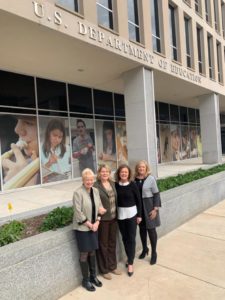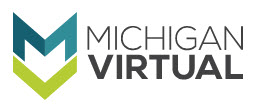The number of K-12 students enrolled in online courses has risen dramatically over the last decade, giving more students the flexibility to learn from home or pursue areas of study not available at their schools. But the growth has also prompted criticism from educators and others that online learning lacks high standards or accountability.
To address concerns about quality and try to improve online learning, the Virtual Learning Leadership Alliance and Quality Matters recently unveiled newly revised standards for virtual education—one set each for online teaching, programs, and courses. Representatives from the two organizations spent two years combing through the existing standards from the Aurora Institute (formerly known as the International Association for K-12 Online Learning, or iNACOL) and soliciting feedback from the field to shape the new standards. It has been nearly a decade since those standards were updated.
Cindy Hamblin, the director of the alliance, led the effort alongside Christine Voelker, K-12 program director for Quality Matters. In a phone interview, Hamblin explained why the standards needed a refresh and how that process worked.
How are these standards used?
“As an online teacher, I can use those in self-reflecting on my own practice and seeing what areas I need professional learning on,” Hamblin said. “We also have programs that are beginning to use those as an evaluation tool, and state departments that utilize them on approving quality online programs.”
They’re also cited in the process of certifying some courses and programs. When districts issue requests for proposals for online program providers, they often refer to the iNACOL standards, Hamblin said. A handful of states—including Florida, Ohio, and Texas—require by law that certification processes for online courses and programs use the standards as a benchmark.
In what ways did the standards need to be updated?
More than 320,000 students are enrolled in statewide online schools, and another 420,000 are enrolled in state-supported virtual schools, according to data from the Digital Learning Collaborative. Growing numbers like those raised the stakes for online education quality, Hamblin said.
The standards “were widely used, but not considered as far as updates in practice and where we are with courses and teaching. What we’ve learned in the last ten years weren’t reflected in the standards.”
The topic of accessibility was mentioned only briefly in the 2011 version; now it’s a separate standard. The teaching standards now feature a deep-dive into the definition of student engagement and the value of communication between students and instructors.
Structurally, the 2011 standards mainly dealt in abstracts. Now, each of the 52 indicators that help clarify the eight standards also includes a real-life example from the field.
How did the revision process work?
“The process of updating it took a year from the initial survey that went out in the field. Then it went through another review chain. Another set of volunteers came in and made comments to the revisions. Then [Christine] and I made sure there was consistency in the standard sets.”
“The community involvement was very key. We had researchers, we had practitioners, higher ed, state departments of ed, K-12 practitioners, even representation outside of the U.S.”
What were the most challenging topics to address?
Accessibility was a big one, she said. “Making sure that that was where we wanted it to be and yet still respect the individual state requirements, yet not so specific that a state coudn’t add their own pieces.”
Accounting for the wide variety of online programs also took some fine-tuning, Hamblin said. “We wanted to make them flexible, whether you were a small program within a district or a large program. In a small school, a lot of times the teacher is designing that course. In a larger program, the teacher doesn’t even touch that course—there’s an instructional design staff to build that course.”
Where is there still room for improvement?
“The online program standards, those were the oldest ones—we feel like maybe that needs another round. I feel like there’s still room for improvement in that area. That’s getting to governance, that’s getting to program evaluation, staffing, all of those kinds of issues. That might be our next round of revisiting that to make sure we’ve got everything covered.
“But what we don’t want people to think is there’s going to be a startling change. We’re massaging, enhancing, refreshing, looking at the field on what needs to be added, or in some cases removed.”
What’s the overarching goal?
“We want to ensure that as we see the field being populated with a lot of different groups, we’re trying to push people to see what a quality course is, this is what it means to be a quality online teacher. As we’re developing programs, this is a great framework to build that quality program.”
source: http://blogs.edweek.org/edweek/DigitalEducation/2019/12/online_learning_standards_revised.html




